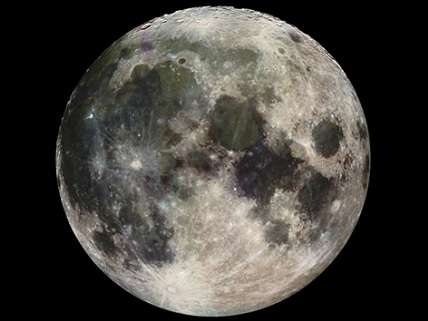Crowdsourced 'Crater Counting' as Good as the Pros
Moon watchin'


Amateurs counting the craters seen on photos of the moon taken by the Lunar Reconnaissance Orbiter are as accurate, in the aggregate, as any professional crater counter, according to a study by the University of Colorado at Boulder. The study relied on CosmoQuest, an Internet project that marshals volunteers to assist in some of the more mundane tasks of National Aeronautic and Space Administration (NASA) space missions.
CosmoQuest is a program created in part by the Center for Science Technology, Engineering, and Mathematics (STEM) at Southern Illinois University Edwardsville that aims "to build a series of projects that map the surfaces of rocky worlds and explore the atmospheres of planets and small bodies the solar system over."
Researchers at Colorado University appear excited at the evidence they've gathered of crowdsourcing's efficacy. Via a university press release:
"The new research points out that crowdsourcing is a viable way to do planetary science," said Research Scientist Stuart Robbins of CU-Boulder's Laboratory for Atmospheric and Space Physics, who led the study. The study compared the results of eight professional planetary crater counters with several thousand amateur crater counters from every corner of the globe.
"What we can say is that a very large group of volunteers was able to chart these features on the moon just as well as professional researchers," Robbins said. "More importantly, we now have evidence that we can use the power of crowdsourcing to gather more reliable data from the moon than we ever thought was possible before."
The results may be exciting, but they shouldn't be surprising. Crowdsourcing has been an effective data-processing and gathering tool for some time. It can be used to solve social problems, raise start-up funds, and even to write policy and try to find missing planes.
Crowdsourcing has also been used in both science and astronomy as well. SETI Live, for example, a project by the Search for Extraterrestrial Life (SETI), launched two years ago; the program crowdsources the search for extraterrestrial life.
SETI@home, meanwhile, has been in operation since 1999; it crowdsources to acquire the computer power needed to analyze radio signals and other scientific measurements that could provide clues about the presence of extraterrestrial life. Even CosmoQuest isn't new. It launched in 2011, and the beta for the Moon Mapper program, which crowdsources the crater counting, launched in 2012.
Editor's Note: As of February 29, 2024, commenting privileges on reason.com posts are limited to Reason Plus subscribers. Past commenters are grandfathered in for a temporary period. Subscribe here to preserve your ability to comment. Your Reason Plus subscription also gives you an ad-free version of reason.com, along with full access to the digital edition and archives of Reason magazine. We request that comments be civil and on-topic. We do not moderate or assume any responsibility for comments, which are owned by the readers who post them. Comments do not represent the views of reason.com or Reason Foundation. We reserve the right to delete any comment and ban commenters for any reason at any time. Comments may only be edited within 5 minutes of posting. Report abuses.
Please to post comments




Operation Moonwatch dates to 1956
Counting the number of craters on the Moon is yet another instance of a problem that can be solved by dropping a big enough rock from a high enough location.
Answer: 1.
That's not a moon.
I ran the Seti@Home screensaver on my home and work computers for years. I stopped after the aliens told me it was a breach of privacy to eavesdrop on their communications.